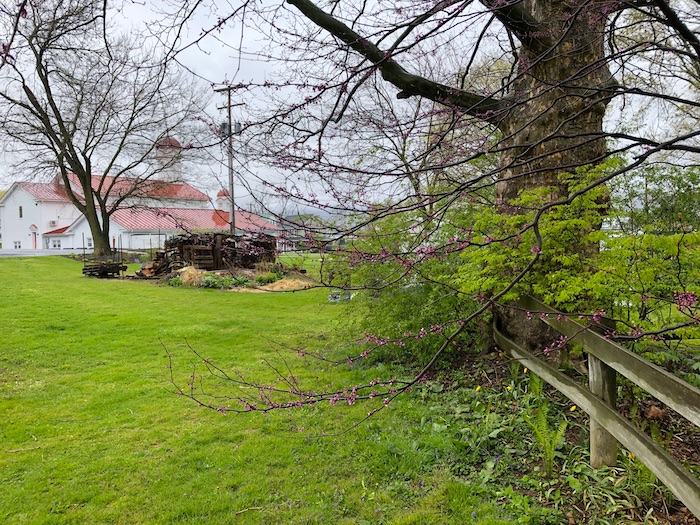
The trees stand tall and broad. Strong, silent, comforting sentries.
In this quiet season of an isolating time, of all the trees visible from our home, the trees in the nearby cemetery offer me the most solace.
Winter is their time, when their rugged beauty and subtle shades contrast with their surroundings.
Snow outlines their limbs. Their outer bark flakes off to show new, tender bark. Mottled pale grey, warm tan and hints of moss green offer color against the stark white and ice blue of the winter landscape.
Knowing them by Name
What is their name? I’d like to learn it.
For a long time, I thought of them as sycamores, perhaps feeling their connection to sycamores like the ones growing beside a trout stream in central Pennsylvania in a beautiful, special place where I left my grief behind. They comforted me as I walked among them.
These trees that line the short sides of the cemetery behind our house have undoubtedly witnessed much grief.
These particular trees have a lot of sycamore characteristics. But the more I learn and study about sycamores, I’m leaning away from thinking of them as true, native sycamores. Their bark buckles and peels like a sycamore, but is too dark. They don’t have the sycamore’s dramatic, ghostly white outline against the winter sky.

I suspect they would have been planted when the Presbyterian cemetery was established.
My best identification: Oriental Plane Trees, based on this description from the Missouri Botanical Garden.
They are probably not native to Pennsylvania, which means they don’t provide as much habitat or ecological benefits as a native tree.
Yet, “our” cemetery trees are majestic shade trees in their own right.
They have a few dried seed pods left on their branches.
Soon, the raspberry of spring-blooming redbuds will outshine those colors. Their shades will remain recessed through the lush greens of summer, then gold, crimson and oranges of autumn.
In winter, we can see and appreciate their bones and shape. Their rugged stillness, visible from our kitchen window and my office window.
On my morning walks, their roots provide reliable, knotted and gnarly beauty.
American settlers reportedly found the size of New World sycamores “astonishing” according to “Lives of Trees,” an Uncommon History by Diana Wells. Old, native sycamores could be hollow and still grow, and sometimes even provided shelter for people and livestock.
Can you imagine?! Talk about resourcefulness and making do.

“Our” trees have thick, full trunks of six feet across, so not quite big enough to move into. Yet, if these trees are left alone here to silently grow, perhaps this is possible.
They are mighty. And every morning, in the light of new days and changing seasons, their bark and roots provide a new, nourishing image to me.
Yet — after all these years and daily walks, through the seasons, I’m reminded of Joni Mitchell singing about clouds, and I wonder if I truly know them at all.


I love trees in wintertime- better to “see” them!